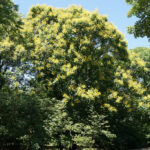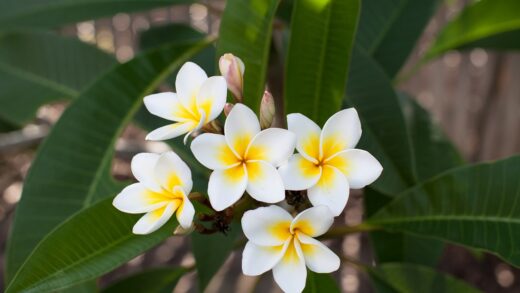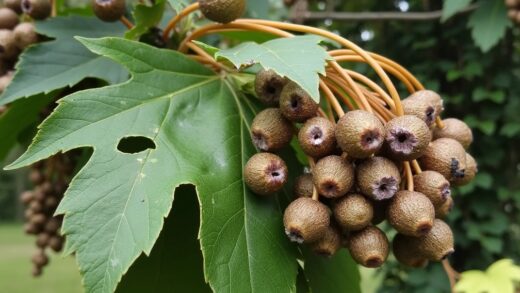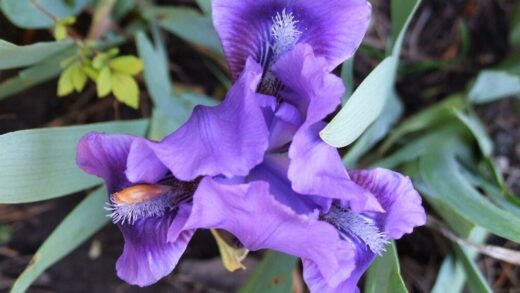Understanding the precise water requirements of cherry laurel is fundamental to cultivating a healthy and visually appealing shrub. This evergreen is often lauded for its resilience, but its performance is directly tied to appropriate moisture levels in the soil. Both insufficient and excessive watering can lead to significant problems, from leaf drop and browning to fatal root diseases. Proper irrigation involves more than just applying water; it requires an understanding of the plant’s needs during different life stages, seasonal adjustments, and the ability to recognize signs of water-related stress. Mastering the art of watering ensures the plant has the resources to maintain its lush foliage and support vigorous growth.
At its core, the goal of irrigating a cherry laurel is to maintain consistent soil moisture without creating waterlogged conditions. The plant’s root system needs access to both water and oxygen to function correctly. When soil is oversaturated, the air pockets become filled with water, effectively suffocating the roots and creating an ideal environment for fungal pathogens that cause root rot. Conversely, when the soil is allowed to dry out completely for extended periods, the plant becomes stressed, its physiological processes are hindered, and it becomes more vulnerable to pests and diseases. The key lies in finding the balance between these two extremes.
The water needs of a cherry laurel change dramatically from the time it is newly planted to when it becomes a fully established specimen in the landscape. A young plant with a limited root system is entirely dependent on the moisture within its original root ball and the immediately surrounding soil. It requires frequent, careful watering to survive and grow. As the plant matures and its root system expands deep and wide into the soil, it becomes much more self-sufficient, capable of sourcing water from a larger area and withstanding periods of dryness with greater ease.
Ultimately, successful irrigation is a proactive practice. It involves not just reacting to a wilting plant but anticipating its needs based on the weather, soil type, and time of year. Techniques such as using mulch to conserve moisture and watering deeply but infrequently to encourage strong root development are essential components of a smart watering strategy. By paying close attention to the plant and the soil, you can provide the optimal level of hydration to keep your cherry laurel thriving.
Understanding the water needs of cherry laurel
The water requirements of cherry laurel are heavily influenced by its natural habitat. Native to regions with warm summers and mild, wet winters, it has adapted to thrive in conditions where moisture is available but the soil drains well. This genetic predisposition explains why it performs so poorly in heavy, waterlogged clay soils, which do not provide the necessary drainage. The plant’s large, broad evergreen leaves have a significant surface area, which leads to a relatively high rate of transpiration, especially during warm, windy, or sunny weather. This process of water loss from the leaves must be balanced by adequate water uptake by the roots.
More articles on this topic
The specific water needs of an individual plant are dictated by a combination of environmental factors. A cherry laurel planted in full sun on a windy site will lose water much more quickly and require more frequent irrigation than one planted in a sheltered, partially shaded location. Similarly, soil type plays a massive role; sandy soils drain very quickly and will need watering more often than loam soils, which have a better capacity for holding moisture. Understanding these variables is crucial for developing a watering schedule that is tailored to your specific garden conditions.
During the active growing season, from spring through summer, the plant’s water demand is at its peak. This is when it is producing new leaves, extending its branches, and, in the case of mature plants, flowering and setting fruit. Providing adequate moisture during this period is essential to support this vigorous growth and maintain the health and density of the foliage. As the weather cools in autumn and the plant’s growth slows, its water requirements naturally decrease. It is important to adjust your watering practices accordingly to avoid oversaturating the soil as the plant heads into dormancy.
It is also worth noting that while established cherry laurels are considered drought-tolerant, this does not mean they are drought-proof. During severe or prolonged droughts, they will still benefit immensely from occasional deep watering. This supplemental irrigation can be the difference between a plant that merely survives the drought and one that emerges from it healthy and unstressed. A stressed plant may shed leaves or become susceptible to pests, so providing water during these critical times is a key part of long-term care.
Watering newly planted shrubs
The period immediately after planting is the most critical time in a cherry laurel’s life in terms of water needs. During this establishment phase, which typically lasts for the first one to two years, the plant’s root system is limited and has not yet grown extensively into the surrounding soil. It is therefore highly vulnerable to drying out. The primary goal of your watering strategy during this time is to keep the original root ball and the surrounding backfill soil consistently moist to encourage rapid root development and minimize transplant shock.
More articles on this topic
A reliable method for watering a newly planted shrub is to provide a slow, deep soaking. This can be achieved by letting a hose trickle slowly at the base of the plant for an extended period, allowing the water to penetrate deeply into the soil rather than running off the surface. This method ensures that the entire root zone is hydrated. The frequency of this deep watering will depend on weather conditions and soil type, but a general guideline for the first few weeks is to check the soil every two to three days and water thoroughly when the top two inches feel dry to the touch.
It is crucial to avoid the common mistake of providing frequent, shallow waterings. This practice only moistens the top layer of soil, which encourages the roots to stay near the surface where they are most vulnerable to heat and drought. By watering deeply and less frequently, you encourage the roots to grow downwards in search of a more stable moisture supply. This establishes a deeper, more resilient root system that will serve the plant well for its entire life, making it much more drought-tolerant once it is mature.
As the first growing season progresses, you can gradually begin to extend the time between waterings, while still ensuring each application is deep and thorough. The plant’s own appearance is a good indicator of its needs; if the leaves start to look slightly dull or droopy, it is a clear sign that it is time to water. By being observant and consistent, you can guide your new cherry laurel through its establishment phase and set it on a path to becoming a strong and healthy component of your garden.
Irrigation for established plants
Once a cherry laurel has been in the ground for two or more years and is showing consistent, healthy growth, it can be considered established. At this stage, its root system has expanded well beyond the original planting hole, making it much more efficient at finding and absorbing water from the surrounding soil. An established plant requires significantly less supplemental irrigation than a new one and can often thrive with just the water provided by natural rainfall in many climates. Your role shifts from providing constant moisture to intervening only during periods of unusual dryness.
The best way to water an established cherry laurel is infrequently but deeply. During the growing season, if there has been no significant rainfall for several weeks, a deep soaking will be beneficial. This might mean watering once every two to four weeks during a dry spell, depending on the severity of the heat and drought. Applying water slowly over a long period allows it to penetrate deep into the soil profile, replenishing the moisture reserves in the entire root zone. This is far more effective than a light sprinkling, which would only evaporate from the surface without reaching the majority of the roots.
The method of water application is also important for established plants. Drip irrigation or soaker hoses are excellent options as they deliver water slowly and directly to the soil at the base of the plant. This minimizes water loss through evaporation and keeps the foliage dry, which helps to prevent the development of common fungal diseases like shot hole. If using a sprinkler, water early in the morning so that the leaves have ample time to dry in the sun before nightfall. Directing the water towards the dripline of the plant, which is the area on the ground directly beneath the outermost branches, ensures you are targeting the most active root absorption zone.
During the autumn and winter months, the irrigation needs of an established cherry laurel decrease dramatically. The plant’s growth slows down, and cooler temperatures and increased rainfall usually provide sufficient moisture. However, it is important to ensure the soil is adequately moist before the ground freezes in late autumn, especially for broadleaf evergreens. A final deep watering before winter sets in can help prevent winter desiccation, a condition where the leaves lose water to dry winter winds while the roots are unable to absorb more from the frozen ground.
Signs of overwatering and underwatering
Being able to distinguish between the symptoms of overwatering and underwatering is a crucial skill for any gardener, as they can often appear deceptively similar. An underwatered cherry laurel will typically show signs of wilting, with leaves drooping and feeling limp. The leaves, particularly older ones, may turn yellow or brown and eventually fall off as the plant tries to conserve moisture. The edges of the leaves might also become crispy and brown. In severe cases, you will notice significant leaf drop and branch dieback. A simple check of the soil will confirm the issue; if it is dry several inches down, underwatering is the cause.
Ironically, an overwatered cherry laurel can also exhibit wilting and yellowing leaves. However, this wilting occurs because the roots are drowning in saturated soil and have begun to rot, rendering them unable to absorb water and nutrients to send to the leaves. Unlike the crispy leaves of an underwatered plant, the yellowing leaves on an overwatered shrub may feel soft or limp. You might also notice a lack of new growth, stunted growth, or the presence of fungus or mold on the soil surface. The definitive test is to feel the soil; if it is consistently wet, soggy, or has a sour smell, overwatering and potential root rot are the likely culprits.
Diagnosing the problem correctly is critical because the solutions are exact opposites. If you determine the plant is underwatered, the remedy is straightforward: provide a deep, thorough soaking immediately to rehydrate the root zone. Then, adjust your watering schedule to be more frequent or to apply more water each time. Creating a soil basin around the plant and adding a layer of mulch can also help to conserve moisture and direct water to the roots more effectively.
If overwatering is the issue, you must act quickly to allow the soil to dry out. Stop all supplemental irrigation immediately. If the plant is in a container, ensure the drainage holes are not blocked. For plants in the ground, improving soil drainage may be a long-term project, but in the short term, you can try to improve air circulation around the base of the plant. In severe cases of root rot, the plant may not be salvageable. It is always easier to revive a plant that has been underwatered than one that has been chronically overwatered.


















